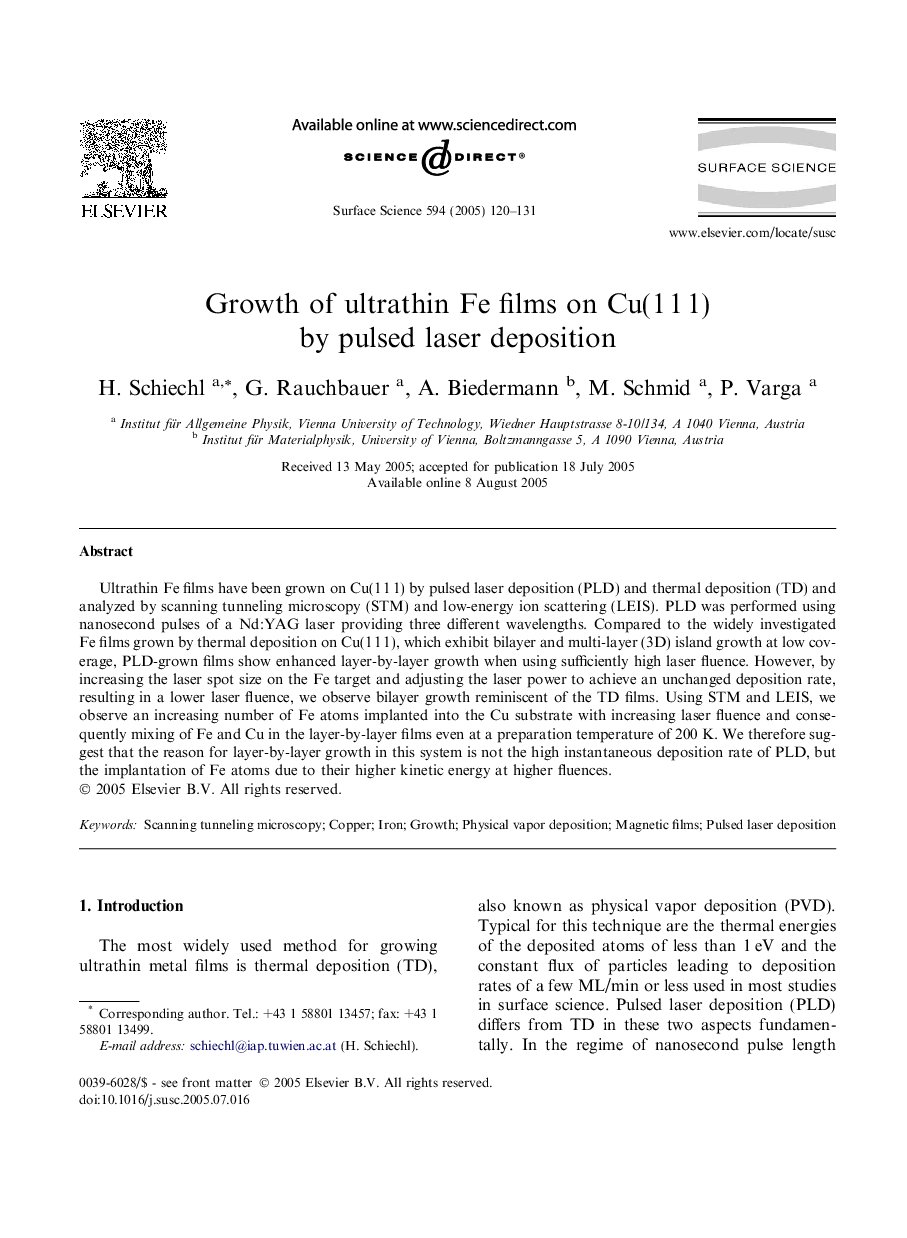| Article ID | Journal | Published Year | Pages | File Type |
|---|---|---|---|---|
| 9594963 | Surface Science | 2005 | 12 Pages |
Abstract
Ultrathin Fe films have been grown on Cu(1Â 1Â 1) by pulsed laser deposition (PLD) and thermal deposition (TD) and analyzed by scanning tunneling microscopy (STM) and low-energy ion scattering (LEIS). PLD was performed using nanosecond pulses of a Nd:YAG laser providing three different wavelengths. Compared to the widely investigated Fe films grown by thermal deposition on Cu(1Â 1Â 1), which exhibit bilayer and multi-layer (3D) island growth at low coverage, PLD-grown films show enhanced layer-by-layer growth when using sufficiently high laser fluence. However, by increasing the laser spot size on the Fe target and adjusting the laser power to achieve an unchanged deposition rate, resulting in a lower laser fluence, we observe bilayer growth reminiscent of the TD films. Using STM and LEIS, we observe an increasing number of Fe atoms implanted into the Cu substrate with increasing laser fluence and consequently mixing of Fe and Cu in the layer-by-layer films even at a preparation temperature of 200Â K. We therefore suggest that the reason for layer-by-layer growth in this system is not the high instantaneous deposition rate of PLD, but the implantation of Fe atoms due to their higher kinetic energy at higher fluences.
Keywords
Related Topics
Physical Sciences and Engineering
Chemistry
Physical and Theoretical Chemistry
Authors
H. Schiechl, G. Rauchbauer, A. Biedermann, M. Schmid, P. Varga,
